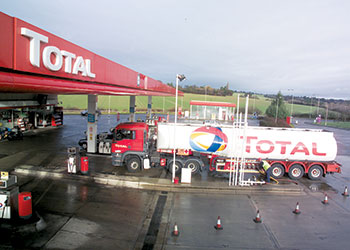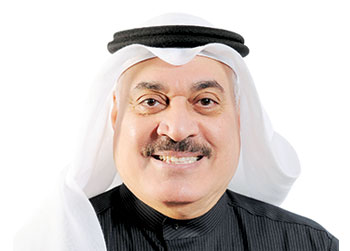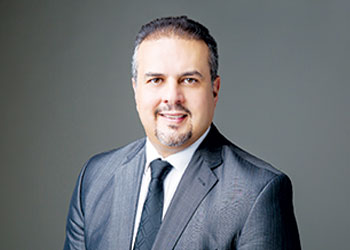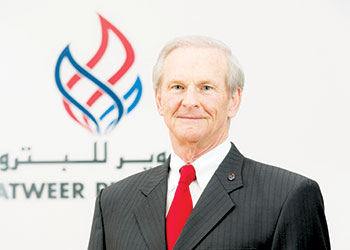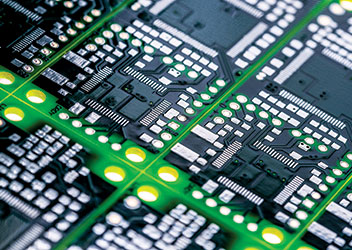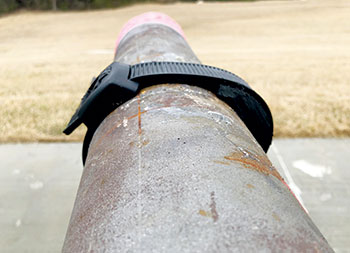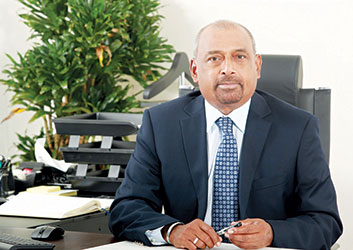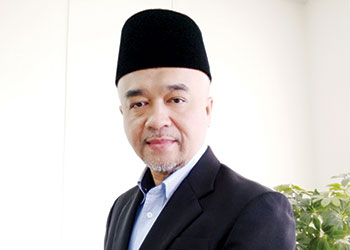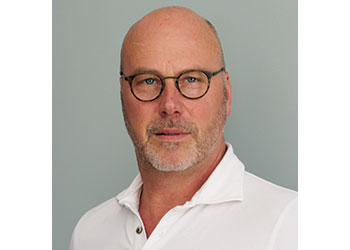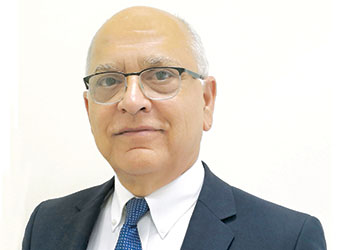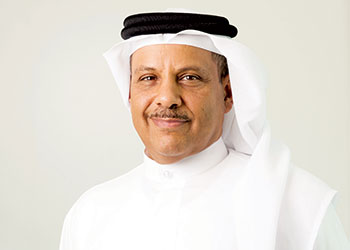
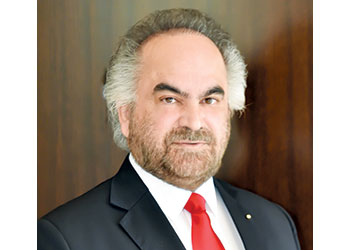 Dr Jawahery ... another year of achievements
Dr Jawahery ... another year of achievements
Last year the Bahrain-based company managed to lower the cost of production by 3 per cent compared to budget. It also achieved 20,048 tonnes higher production compared to budget and its exports were 3 per cent higher
Our Bahrain-based Gulf Petrochemical Industries Company (GPIC) year 2018 was another successful year, as the company improved its profitability substantially compared to the previous year.
Total profit for the year was $82.4 million, says GPIC president Dr. Abdulrahman Jawahery in an exclusive interview with OGN.
Last year GPIC managed to lower the cost of production by 3 per cent compared to budget. It also achieved 20,048 tonnes higher production compared to budget and its exports were 3 per cent higher, says Dr Jawahery.
GPIC’s total production capacity sits at 1.5 million tonnes, with roughly 40 per cent being urea, followed by ammonia and methanol at around an equal capacity percentage.
"Our 2018 production breakdown reflects the percentages mentioned above, where urea reached 657,929 metric tonnes (mt), followed by ammonia at 421,200 mt and methanol at 424,679 mt respectively. Our output capacity for 2019 is expected to be just over 684,000 mt for urea, with methanol at an expected 454,860 mt and ammonia at 444,030 mt," he says.
 |
GPIC’s CDR project |
Excerpts from the interview:
Was the total production target for 2018 higher than that of 2017? If so how they did the company beat the general slump that has affected the petrochemical sector adversely?
In 2018, GPIC carried out a total plant turnaround after almost three years of continuous operations. Because of this, the production is less than 2017. In 2018, GPIC has produced a total of 1.5 million tonnes of ammonia, urea and methanol compared to 1.6 million tonnes in 2017.
Because of the slump, GPIC took the opportunity to carry out the turnaround and refurbish the plants resulting into a better performance after the turnaround.
Despite the slump, owing to the various austerity measures, GPIC is able to maintain a respectable profit margin on their products to sustain higher production rates.
What was the capacity utilisation at all the three plants?
In 2018, GPIC achieved the target cumulative of utilisation factor for all of the three plants. methanol Plant achieved a cumulative of 102.5 per cent, ammonia Plant achieved 105.4 per cent and urea Plant achieved 114.4 per cent.
 |
GPIC’s board of directors |
What were the export statistics for 2018? How does it compare with 2017? What is the projection for 2019?
In 2018, GPIC carried out a total plant turnaround after almost three years of continuous operations. Because of this, the projected production and export is expected to be less than 2017. In 2018, GPIC has exported a total of 1.13 million tonnes of ammonia, urea and methanol; this represents a 6.5 per cent drop from 2017. GPIC’s export records by product showed 408,076 tonnes of methanol, a 10.15 per cent drop from 2017, 667,721 tonnes of urea, drop of 1.3 per cent from 2017 and 49,325 tonnes of ammonia 33 per cent drop from 2017. The products were shipped by 59 vessels to their final destination.
The total planned production of ammonia, urea and methanol in 2019 will be 1.58 million tonnes, out of which 1.19 million tonnes will be available for export.
The traditional markets have witnessed a dramatic shift and the company is exploring any potential new emerging opportunities and customers coming from a number of key regions around the globe. The markets like Taiwan, India, US, Brazil and countries in East Asia have showed sound and growing trends in imports for GPIC’s products, whilst more traditional markets have witnessed an internal consolidation of their imports in general, resulting in a shift in market purchasing patterns.
For GPIC, China and Brazil has had the highest share of the company’s exports in 2018 with 18 per cent followed by India with 16 per cent and Taiwan with 14 per cent. This has all been achieved in accordance with the marketing plan and contractual obligations and in spite of an unstable global market.
How much of CO2 is being treated daily after the commissioning of the carbon capture system by GPIC?
GPIC is one of the first Petrochemical Companies in the Middle East to embark on a Carbon Dioxide Recovery (CDR) Project, to cut down greenhouse gas (GHG) emissions and to improve overall efficiency of natural resources by enhanced production of methanol and urea in its complex.
GPIC’s CDR unit utilises the latest state-of-the-art and commercially proven technology from MHI, Japan to recover carbon dioxide from the methanol reformer flue gas stack to increase methanol Production by 120 metric tonnes per day (tpd) and the urea production by 150 tpd. The Project was completed successfully in December 2009 ahead of its planned schedule.
The CDR unit has helped in minimising the emission of CO2, a greenhouse gas, through its recovery from the waste flue gas to the atmosphere. The unit captures 450 tonnes of CO2 per day, resulting in GHG emissions reducing by 0.12 million tonnes of CO2 annually. Since 2009 GPIC’s CDR plant has reduced more than 1.1 million tonnes of CO2 emissions to the atmosphere.
How much worth of capex projects were undertaken by GPIC in 2018? What were the main projects undertaken?
Every year we undertake substantial investment in the sustainability of our business and our operations. In fact, GPIC does not relate its Capex investment to the revenue it generates. Instead, revenue generation is for us, a by-product of our company’s sustainability strategy in terms of the three pillars – People, Planet and Profits.
GPIC rather continuously seeks ways to improve, enhance and ensure its viability each year on the basis of what it believes it should invest in for the future. Again, this Integral-Forward-Focus approach is what drives our Capex investments.
Our four key categories of investment in terms of Capex are: Safety, Health and Environment; Reliability; Information Technology and major projects. We have a number of short-term and long-term Capex projects within each of these categories and every Turnaround we plan, involves independent Inspectors and Insurance Surveyors who give guidance on areas of our plant operations we could seek to improve in the future.
GPIC generally budgets around BD15 million each year to undertake its short-term and long-term Capex Projects. Of course, volatile markets and global economic instability have resulted in all companies across every sector and every industry, consolidating their costs. GPIC is by no means immune to these factors either, and has during the course of 2018 consolidated and prioritised its Capex investment accordingly.
Some of the main capex projects undertaken by GPIC in 2018:
• Replacement of number of critical exchangers in both am monia and urea plants such as Waste Heat Boiler E-0801, Steam Surface Condenser of Refrigeration Compressor Tur bine, Gas Cooler E-0804, 2nd Carbamate Condenser E- 8202B and 3rd stage Inter cooler E-8103 of CO2 Compressor;
• Replacement of number of separators in both ammonia and methanol Plants such as ammonia Separator F-0801, Catch Pot Vessel F-1501 and Separator F-1408 in CO2 Booster Compressor;
• Replacement of Auxiliary Boiler Deaerator D-5201 with im proved design;
• Replacement of number of catalysts such as methanol Syn thesis Catalyst, methanol Reformer Catalyst, ammonia Re former Catalyst and urea Dehydro Reactor Catalyst;
• Replacement of number of critical control valves in all plants;
• Replacement of some Critical Pressure switches with SIL certified Pressure switches in ammonia and methanol Plants;
• Replacement of Inlet Distribution Header of ammonia Con verter and connected Piping from Grade P1 to P11 material;
• Upgrade of switchgear at substation # 4 with modern type that includes SCADA communication facility;
• Replacement of 415V Switch boards at Substation #2; and
• Replacement of 415V Switchboard "31SWR2-2" at Sea
Water Intake Area in Utilities Plant.
What were the tasks undertaken by the maintenance department in 2018 to improve reliability? How many orders were undertaken for 1) preventive maintenance 2) corrective maintenance 3) modifications?
1. Total completed preventive maintenance work orders = 7,350 orders
2. Total completed corrective maintenance work orders = 1,441
orders
3. Total completed modifications and CapEx work orders = 32 orders
Regarding profits what was the scenario in 2018? How much profit did the company post in 2018?
Year 2018 is another successful year for GPIC, as the company improved its profitability substantially compared to previous year. Total profit for the year 2018 is $82.4 million.
How did GPIC enhance and strengthen its Health, Safety and Environmental (HSE) management systems in 2018? What were the achievements?
We are successful at GPIC because safety is not just a programme; it is a way of life for us. As a forward-looking petrochemical and fertiliser company, GPIC recognises that our commitment to safety is the foundation for building and maintaining trust and public confidence. It is part of being a good citizen, a good neighbour and a good partner. Safety drives our commitment to sustainable business and defines who we are and what we stand for. By instilling a culture that ensures the well-being and safety of our employees, we empower them to focus on the details and to do what is right first time every time. This leads to improved performance and reliable, consistent and predictable delivery of our high-quality products.
At GPIC, safety, health and environmental performance is at the top of our agenda and is measured, reported, evaluated and continuously improved upon. It is part of our company’s regular review process and we have set stringent, clear and visible goals with leading and lagging indicators throughout all levels and processes of the organisation. We focus and apply measures to all of the elements of safety culture; Systems and Processes; Skills and Knowledge of Individuals; Behaviours; Attitudes, Perception and Leadership. We have long realised and recognised that there is no single reliable measure of health and safety performance. What is required is a variety of measures providing information on a range of health and safety activities.
As a forward-looking company, GPIC understands the worker safety dimension of sustainability and has started proactively leveraging the OHS and sustainability connection. With the launch of the UN’s 17 Sustainable Development Goals, GPIC is using these global strategies to underpin its sustainability efforts.
In 2018 the biggest achievement was to complete the Maintenance Turnaround successfully in a Safe, Secure and Environmentally friendly manner. A daily work force of 4,000 regional and international contractor personnel along with GPIC carried out the jobs safely and efficiently without any accident.
Throughout the years, GPIC continued to enhance and strengthen its Safety, Security, Health and Environmental (SSHE) management systems including training, capacity building and testing of its emergency response and readiness. These continual improvement efforts culminated in achieving a record 30 million working hours for its workforce and contractors without any lost time accident, exceeding 6,070 days.
With regard to its excellence in occupational health, safety and the environment, GPIC has been awarded the RoSPA Chemical Sector Award from the Royal Society for Prevention of Accidents (RoSPA) from the UK. This award was presented to GPIC for its outstanding application of SHE standards and for undertaking a leading role in this area. GPIC’s leadership in SHE excellence was acknowledged when GPIC’s President won the "CEO Who Gets It" award from the National Safety Council, US. GPIC won the GPCA award for the best Responsible Care Company for the Second time in the GCC for its sustained and outstanding performance, driving excellence in safety, health, security and environmental management. On the environmental front GPIC won the KSA Environmental Award.
How much has GPIC invested so far for the objective of improving safety, reliability, performance and preservation of the environment?
From the very beginning, GPIC have learned that the cutting edge, competitive advantage can only result from combining social and environmental considerations into business strategies. With this mindset, GPIC’s business strategies over the years have reflected the intense desire to instill sustainability principles into the organisational culture and imprint it on everyday behaviour. This has helped GPIC to follow a clear path to excellence in the field of sustainability and corporate responsibility.
Our journey of sustainability continues, supported by our updated Vision, Mission and Core Values, in line with our future aspirations and stakeholder needs. We continue moving forward with our Corporate Strategy 2030, identifying potential areas of growth, including the debottlenecking of our existing facilities for improved energy efficiency and enhanced production capabilities. The construction of our new $8.8 million urea Formaldehyde plant at the existing site is complete and it is currently under commissioning. Our local export of methanol to downstream industry in Bahrain also continues.
We proudly support the United Nation’s 17 Sustainable Development Goals (SDG’s) and continue to proactively align our business priorities with these 17 SDGs we have also shown the link to the SDGs in our Corporate goals, both longer term and annually. We remain firmly committed to the UN Global Compact and their ten principles. We are also committed to its signature platforms such as the Women’s Empowerment Principles (WEPs) and the Food and Agriculture Business Principles (FAB 6 Principles) and have issued our annual advanced level Communication on Progress Report (COP) in March 2018. Our commitment to post COP 21 requirements remains firm and we have issued our third GHG Inventory report in 2018 on IPCC guidelines. Since 2012 we are sharing our sustainability performance globally through the GRI Sustainability reports, highlighting our commitment to enhanced transparency and accountability. Our latest GRI report was issued in March 2018 in accordance with the latest GRI standards.
Our environmental performance in 2018 continued to be outstanding. We have reduced our carbon emissions by around 1.10 million tonnes since the start of our Carbon Dioxide Recovery (CDR) plant in 2009. Our energy efficient LED lighting project continues and we are replacing conventional lights with LEDs, since 2013, we have installed 4010 LEDs within our complex, replacing conventional lights, resulting in an energy saving of 1099.52 MWH/Y, a cost saving of $81,992 and a CO2 emission reduction of 547.56 tonnes/year.
Our waste recycling of paper, plastic and aluminium is gaining momentum and since 2005 we have donated 63 tonnes of waste paper to charity by recycling it. Our latest initiative of tree plantation in schools known as the Green Wave campaign is an initiative launched 3 years ago, in partnership with the Kingdom of Bahrain’s Ministry of Education and the UNEP office in Bahrain. Under this programme started in 2015, 70 schools have benefited from the programme with the distribution of 2,800 sapling trees in total. Our environmental awareness programme in schools has benefitted more than 40,000 students in Bahrain and the schools environmental research programme has entered its 15th Cycle. Both these programmes have won the best CSR projects in the partnerships category. In addition to these awards, we were humbled with several awards and accolades and the most noteworthy are Mohammed Bin Rashid Al Maktoum Business Excellence Award and the Business Innovation Award, the Arabia CSR Awards and KSA environmental award in the Islamic world.
We believe the only way forward towards corporate sustainability is through leadership, collaboration, innovation and youth engagement. Only by doing this can we make a difference.
GPIC invested total of BD200 million over the past 16 years for the objective of improving safety, reliability, performance and preservation of the environment.
How many man-days did turnaround 2018 achieve?
1) Direct Hired Manpower = 36,400 Peak Nos. 1.525
2) Equipment Operators = 1,050 Peak Nos. 52
3) Package Contracts Services = 22,700 Peak Nos. 1,258
4) Vendor Services = 850 Peak Nos 63
5) GPIC = 7,300 Nos. 332 (Maint. = 77, Oprn.+Insp = 204, Seconded 51)
Total Man- days = 68,300
How much did the in-house spare part manufacturing programme save for the company in 2018?
Saving of In House Spare Parts Manufacturing for GPIC Warehouse - BD38,777 in 2018.



















































































